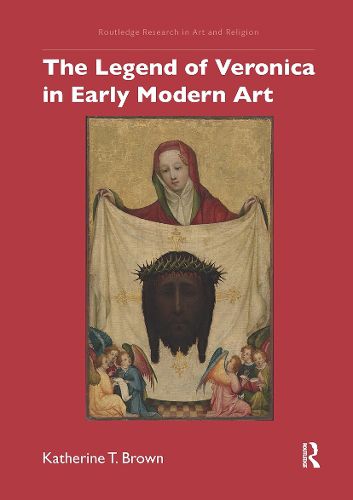Readings Newsletter
Become a Readings Member to make your shopping experience even easier.
Sign in or sign up for free!
You’re not far away from qualifying for FREE standard shipping within Australia
You’ve qualified for FREE standard shipping within Australia
The cart is loading…






In The Legend of Veronica in Early Modern Art, Katherine T. Brown explores the lore of the apocryphal character of Veronica and the history of the "true image" relic as factors in the Franciscans' placement of her character into the Via Crucis (Way of the Cross) as the Sixth Station, in both Jerusalem and Western Europe, around the turn of the fifteenth century.
Katherine T. Brown examines how the Franciscans adopted and adapted the legend of Veronica to meet their own evangelical goals by intervening in the fabric of Jerusalem to incorporate her narrative - which is not found in the Gospels - into an urban path constructed for pilgrims, as well as in similar participatory installations in churchyards and naves across Western Europe. This book proposes plausible reasons for the subsequent proliferation of works of art depicting Veronica, both within and independent of the Stations of the Cross, from the early fifteenth through the mid-seventeenth centuries. This book will be of interest to scholars in art history, theology, and medieval and Renaissance studies.
$9.00 standard shipping within Australia
FREE standard shipping within Australia for orders over $100.00
Express & International shipping calculated at checkout
In The Legend of Veronica in Early Modern Art, Katherine T. Brown explores the lore of the apocryphal character of Veronica and the history of the "true image" relic as factors in the Franciscans' placement of her character into the Via Crucis (Way of the Cross) as the Sixth Station, in both Jerusalem and Western Europe, around the turn of the fifteenth century.
Katherine T. Brown examines how the Franciscans adopted and adapted the legend of Veronica to meet their own evangelical goals by intervening in the fabric of Jerusalem to incorporate her narrative - which is not found in the Gospels - into an urban path constructed for pilgrims, as well as in similar participatory installations in churchyards and naves across Western Europe. This book proposes plausible reasons for the subsequent proliferation of works of art depicting Veronica, both within and independent of the Stations of the Cross, from the early fifteenth through the mid-seventeenth centuries. This book will be of interest to scholars in art history, theology, and medieval and Renaissance studies.